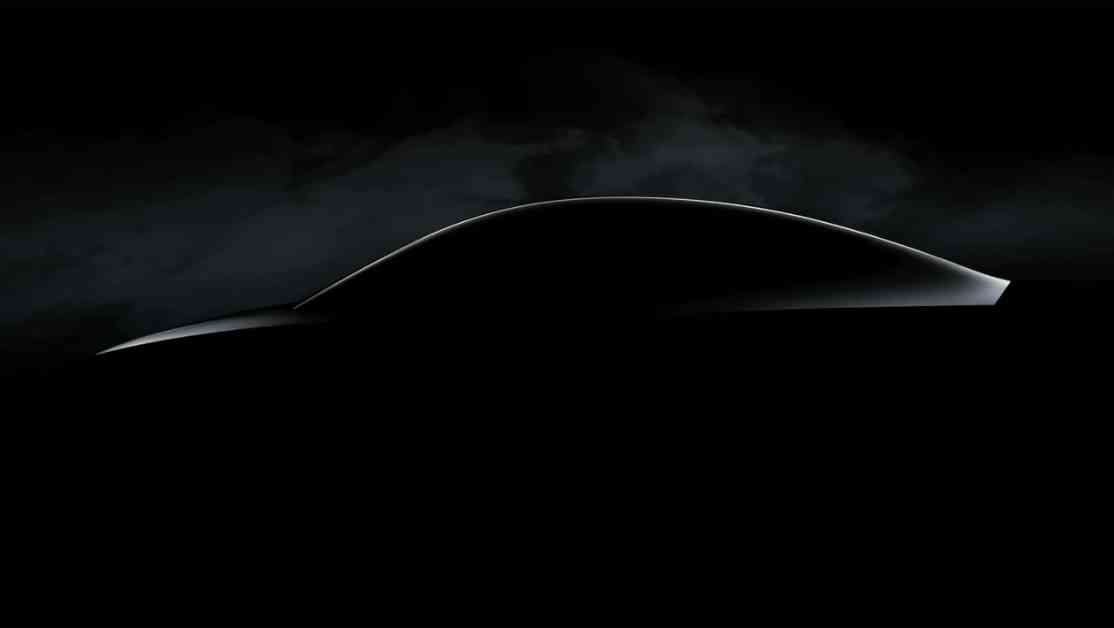Elon Musk, the CEO of Tesla, has announced that the highly anticipated Tesla Model 2, also known as project ‘Redwood’, is set to launch in the first half of 2025. This affordable, entry-level electric car is a significant step for Tesla as it aims to lower the price of entry to its range of electric vehicles. Musk reaffirmed this timeline during the company’s latest financial results call, indicating that production of the Model 2 is on track for the specified timeline.
The unveiling of the Tesla Model 2 is eagerly awaited by fans and industry experts alike. Musk hinted at a potential reveal of the EV in the near future, stating that the Robotaxi product unveil has been postponed to October 10th to make important changes that will improve the overall product. This delay allowed Tesla to enhance the Robotaxi and add other features to the product unveil.
According to presentation slides for investors, the Tesla Model 2 will enter production in the first half of 2025. The vehicle is expected to utilize elements of Tesla’s next-generation platform along with components from its existing architectures. The Model 2 will be built on the same production lines as Tesla’s current vehicle lineup, showcasing the company’s commitment to efficient manufacturing processes.
While Tesla acknowledges that this approach may not yield as much cost reduction as initially anticipated, it will enable the company to grow its vehicle volumes in a more capex efficient manner during uncertain times. By utilizing existing capacity and production lines, Tesla aims to achieve more than 50% growth over 2023 production before investing in new manufacturing lines.
The Tesla Model 2 is positioned as a more affordable addition to Tesla’s lineup, offering a lower price point than the base Model 3, which currently starts at £39,990 in the UK. The Model 2 is expected to cater to a wider market segment by providing a more accessible option for consumers interested in electric vehicles.
Exclusive images of the Tesla Model 2 have been released, showcasing a design that draws inspiration from Tesla’s existing lineup. The teaser image shared at an annual shareholder meeting in 2023 hints at a car with design cues similar to the Model Y SUV and Model 3 saloon. Based on interpretations of the teaser image and design sketches shared on social media, the Model 2 is expected to feature design elements from the Model Y and the facelifted Model 3.
The Model 2 is projected to rival conventional family hatchbacks, with a length of around 4.4 meters. The design of the Model 2 may incorporate a more aggressive rear roofline while maintaining a conventional bonnet with ample luggage space. While the car is commonly referred to as the Tesla Model 2, the final badge is yet to be confirmed, as Tesla has a history of naming its models creatively.
Elon Musk has expressed his vision for the Model 2, stating that the company will leverage insights from its existing models – the Model S, X, 3, Y, Cybertruck, and Semi – to develop the new platform. By integrating key learnings from previous models, Tesla aims to optimize the cost efficiency and performance of the Model 2, targeting a significant reduction in production costs.
The pricing and battery technology of the Tesla Model 2 are crucial aspects of the vehicle’s development. Musk has indicated that the next-generation vehicle will be approximately half the cost of the Model 3 and Y platform, making it a compelling option for budget-conscious consumers. The use of innovative battery technology, such as lithium-iron phosphate cells, is expected to enhance the efficiency and affordability of the Model 2.
In terms of battery technology, Tesla is exploring new approaches to make the Model 2 more cost-effective. The company’s focus on utilizing battery chemistry that does not rely on rare earth materials and is compatible with various cell types demonstrates Tesla’s commitment to innovation and sustainability. By leveraging advancements in battery technology, Tesla aims to enhance the performance and affordability of the Model 2.
As Tesla continues to expand its production capacity and streamline its manufacturing processes, the Model 2 represents a significant milestone in the company’s evolution. By offering a more affordable electric vehicle option, Tesla is poised to capture a larger market share and compete with established players in the electric vehicle market.
In conclusion, the Tesla Model 2 is a highly anticipated addition to Tesla’s lineup, offering a more affordable entry-level electric car for consumers. With a focus on innovation, cost efficiency, and sustainability, the Model 2 represents Tesla’s commitment to advancing the electric vehicle industry. Stay tuned for more updates on the launch and features of the Tesla Model 2 as it approaches its release date in 2025.










